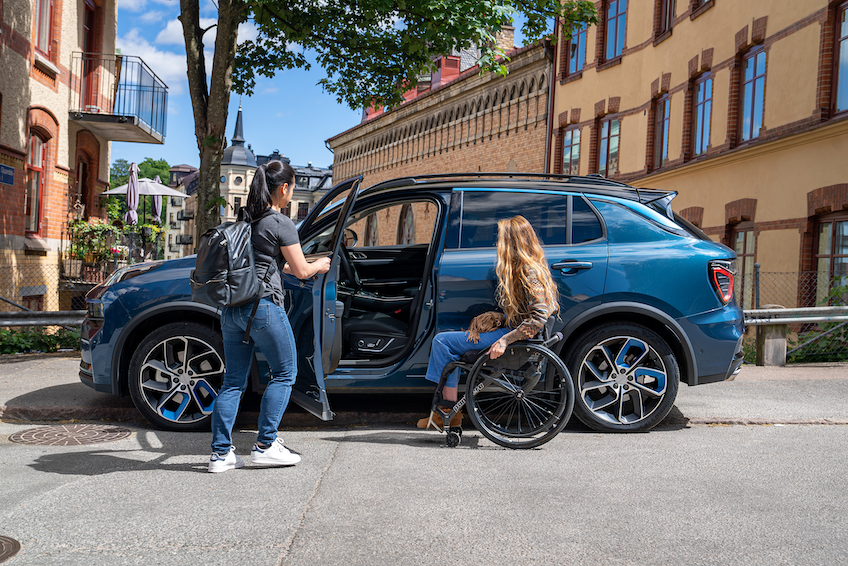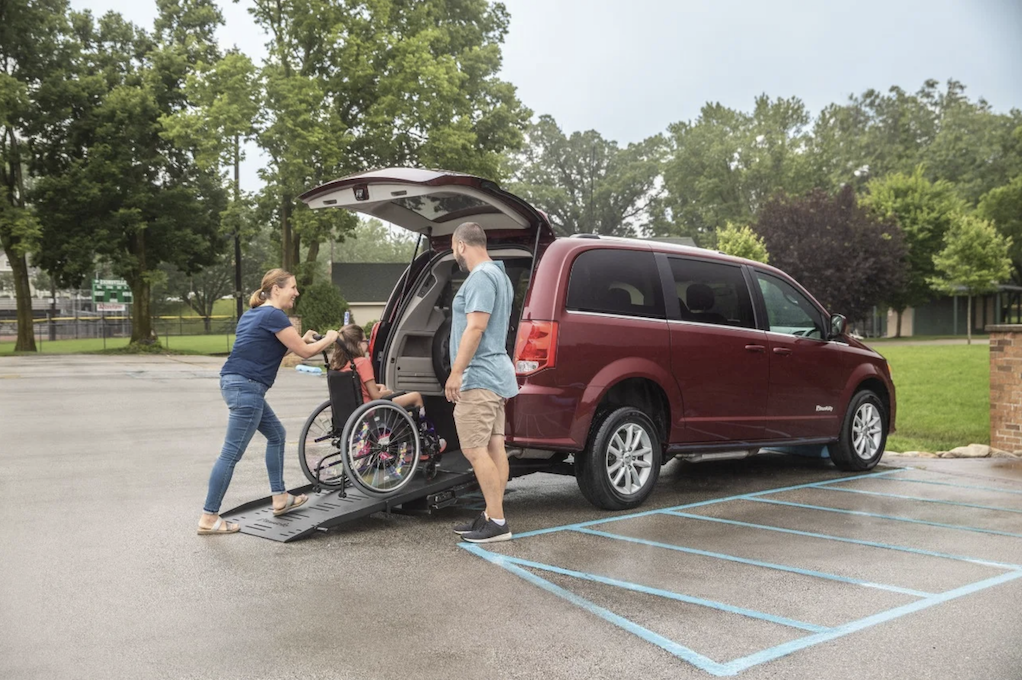
Can you transfer from a manual wheelchair to a car seat, with or without assistance? Do you enjoy sitting in the front row? There are many vehicle adaptation options, ensuring a safe, comfortable, and more independent driving experience, away from the rear section of your car.
Are you using a manual wheelchair but haven’t found a vehicle suitable for your needs yet? Vehicle adaptation always depends on individual needs. At the same time, it can be difficult to know how to choose the right car. The suitability of a vehicle predominantly relies on the adaptation requirements of each individual. But the vehicle of your choice must not necessarily be very large. Most importantly, where you can and want to sit is crucial to making the most of your driving or passenger experience.
The advantages of front-row accessibility
When it comes to accessibility options, the size of a car does not necessarily have to be a decisive factor. However, staying in the back of the vehicle when entering from the rear has very different implications and impact compared to taking a seat in the front or second row. At BraunAbility, we want people to have the option to sit either in the front or back of the vehicle, as long as it is possible and available. Using a wheelchair, getting seated in the back of one's car can feel isolating, less social, and result in limited interaction with other passengers.
In case your vehicle choice is not dependent on you remaining in your wheelchair, here is why we recommend choosing a car adaptation option that allows you to access the driver's or passenger seat.
Rethinking rear entry – moving to the front
For optimal comfort and safety, we advocate for transferring from your wheelchair to an accessible vehicle seat when travelling. The reason is that car seats, especially accessible car seats, are built to provide better support, reduce the risk of injury, and allow access to important features like original seat belts and air conditioning. Additionally, OEM systems like front airbags and side curtain airbags can protect you while sitting in the front seat during a side collision. Sitting in the vehicle's front means you are in a space that has been designed and tested to provide the best possible protection from collisions. Also, you are less likely to get sick from driving there, and you can also enjoy the best access to comfort components such as the car's stereo.
If transferring from your mobility aid into a car seat isn’t possible for you — for example, if you use a powered wheelchair — there are other options. You might also prefer to stay seated in the back of a vehicle. In these cases, even larger car models, sometimes confusingly referred to as Wheelchair Accessible Vehicles (WAVs), can be a good solution. These vehicles are specifically designed to accommodate wheelchair users without the need to transfer from or to a powered mobility aid.
While transferring to a car seat can be advantageous for many, WAVs with a lowered floor can provide a distinct type of support, especially if you are in a wheelchair during car travels:
- No wheelchair transfer is needed.
- A generally effective mobility solution.
- Wheelchair restraints and accessible seat belts provide additional securement.
- Vehicles with high roofs and wide door openings offer space and easy access.
Accessibility possibilities you might not know about
Of course, various car models of different sizes can be modified to be wheelchair accessible. One might be surprised by how vast the variety of vehicle accessibility products and mobility support is. In particular, users of manual wheelchairs can, for instance, often benefit from vehicle adaptations such wheelchair hoists and stowing solutions, features like swivel seats, transfer boards, and hand controls. This can be the case even if they require additional assistance to operate these mobility solutions. Vehicle adaptations are often customisable and can be tailored to the individual needs of each user and their vehicle. This means that very large car models with lowered floors are not always necessary, even though they may initially seem like the most practical choice. Without knowing, some users may opt for a larger vehicle in order to remain seated in their wheelchair in the rear of the vehicle, rather than exploring adaptation options that would allow them to sit in the front of a smaller car.


Furthermore, if you are able to transfer to and from a manual wheelchair but are choosing a larger vehicle, it may be because you are not aware of the accessibility products available. Keep in mind that vehicles that are larger and have lower floors may have certain shortcomings for wheelchair users who stay in the back of the vehicle:
- Front-row safety features: OEM systems like front airbags and side curtain airbags can protect you while sitting in the front seat during a side collision.
- Social interaction: Sitting in the back of the car can feel isolating and limit interaction with other passengers.
- Individual Comfort: Wheelchair users who need to remain in the rear seat may have limited access to the car’s features (e.g., air conditioning or music controls) and may not receive the same stability and support that original or adapted vehicle seats provide.
- Driving view: Wheelchair users may have a not so good view, which can lead to motion sickness.
Having larger adapted vehicle models and/or WAVs with lowered vehicle floors could also cause a different cost outcome. For example:
- Initial costs: Significant changes to the vehicle may be required.
- Resale value: Post conversion WAVs often can’t be restored to their original condition, which reduces their second-hand value.
- Upgrades: Changing personal needs may lead to frequent updates or new vehicles over time.